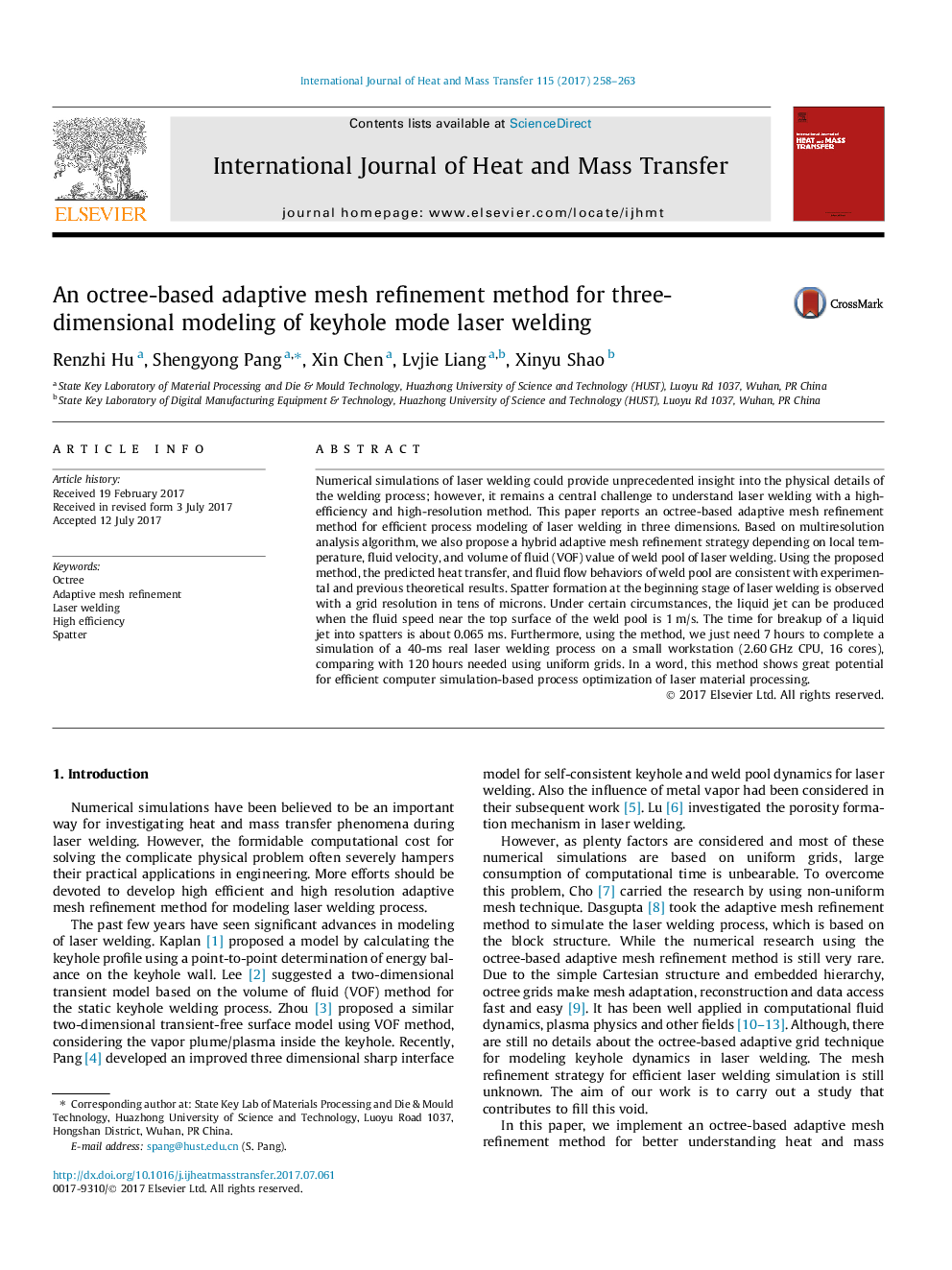| Article ID | Journal | Published Year | Pages | File Type |
|---|---|---|---|---|
| 4993464 | International Journal of Heat and Mass Transfer | 2017 | 6 Pages |
Abstract
Numerical simulations of laser welding could provide unprecedented insight into the physical details of the welding process; however, it remains a central challenge to understand laser welding with a high-efficiency and high-resolution method. This paper reports an octree-based adaptive mesh refinement method for efficient process modeling of laser welding in three dimensions. Based on multiresolution analysis algorithm, we also propose a hybrid adaptive mesh refinement strategy depending on local temperature, fluid velocity, and volume of fluid (VOF) value of weld pool of laser welding. Using the proposed method, the predicted heat transfer, and fluid flow behaviors of weld pool are consistent with experimental and previous theoretical results. Spatter formation at the beginning stage of laser welding is observed with a grid resolution in tens of microns. Under certain circumstances, the liquid jet can be produced when the fluid speed near the top surface of the weld pool is 1Â m/s. The time for breakup of a liquid jet into spatters is about 0.065Â ms. Furthermore, using the method, we just need 7Â hours to complete a simulation of a 40-ms real laser welding process on a small workstation (2.60Â GHz CPU, 16 cores), comparing with 120Â hours needed using uniform grids. In a word, this method shows great potential for efficient computer simulation-based process optimization of laser material processing.
Related Topics
Physical Sciences and Engineering
Chemical Engineering
Fluid Flow and Transfer Processes
Authors
Renzhi Hu, Shengyong Pang, Xin Chen, Lvjie Liang, Xinyu Shao,
